Kent Shaw's Blog, page 20
August 17, 2013
"Toys ‘R’ U.S. (When Dinosaurs Ruled the Earth)," by...
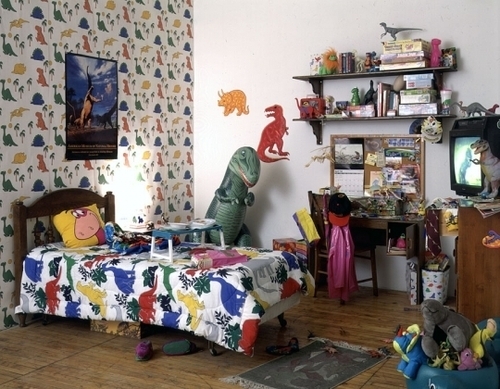
"Toys ‘R’ U.S. (When Dinosaurs Ruled the Earth)," by Mark Dion. Or you could call it Dinosaur Friends!
Published on August 17, 2013 08:36
August 16, 2013
You Are Not Dead By Wendy Xu - The Rumpus.net
You Are Not Dead By Wendy Xu - The Rumpus.net:
You would love to read this review I wrote of Wendy Xu’s book. Because you, my friend, aren’t dead. And it’s good to be reminded of it.
Published on August 16, 2013 10:39
August 15, 2013
Maybe this is a self-portrait of Urs Fischer. Don’t stop,...
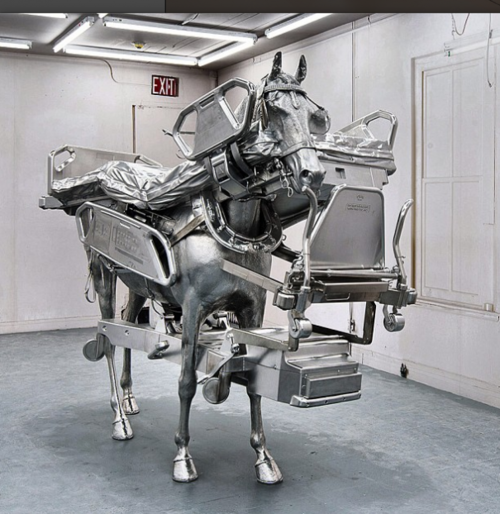
Maybe this is a self-portrait of Urs Fischer. Don’t stop, though, Urs Fischer! Don’t rest!
Published on August 15, 2013 04:49
August 13, 2013
"PLANET DRILL
======
Into freedom I see to ascend vibration
Into freedom I see to ascend vibration
To..."
“PLANET DRILL
======
Into freedom I see to ascend vibration
Into freedom I see to ascend vibration
To ascend vibration, a glass wall long enough
Long enough we’ve waited, our heads under desks
Under desks the bombs will all but save us
But save us. But saved, the past is like a brick
Like a brick already I’m living in the house
Living in the house, I live under construction
Construction by those with their heads under desks
Under desks now chairs of the government running
The government running my front deck like a porch
Like a porch, the tomb. But what’s like a deck
A deck is evening, the evening chamber
The chamber as the evening draws back
The evening draws back to planet-original color
Planet-original color, a glass wall
A glass wall long enough to stand by
By then walking myself to glass
To glass the secrets don’t themselves opaque
But opaque an alignment of invisible forces
Forces then together that, forced to, commit
To commit martyrdom, or should have
Or should have martyrdom become its own martyr”
- "Planet Drill," by Jessica Laser, from Boston Review July/August 2013. Oh my God, she is repeating a lot in this poem. And, of course, she would be repeating so much in this poem. Because these are drills. We are taught to repeat drills. And, of course, we repeat a lot of things in our lives. Like what? Sitting on a porch. Glass. Are these drills? Mark Levine uses the word “blithe” in his introduction to Laser’s poems, and I have to say I love that word for this. The speaker in all the poems in the sampler has such an easy feel about her phrasing, her stance.
======
Into freedom I see to ascend vibration
Into freedom I see to ascend vibration
To ascend vibration, a glass wall long enough
Long enough we’ve waited, our heads under desks
Under desks the bombs will all but save us
But save us. But saved, the past is like a brick
Like a brick already I’m living in the house
Living in the house, I live under construction
Construction by those with their heads under desks
Under desks now chairs of the government running
The government running my front deck like a porch
Like a porch, the tomb. But what’s like a deck
A deck is evening, the evening chamber
The chamber as the evening draws back
The evening draws back to planet-original color
Planet-original color, a glass wall
A glass wall long enough to stand by
By then walking myself to glass
To glass the secrets don’t themselves opaque
But opaque an alignment of invisible forces
Forces then together that, forced to, commit
To commit martyrdom, or should have
Or should have martyrdom become its own martyr”
- "Planet Drill," by Jessica Laser, from Boston Review July/August 2013. Oh my God, she is repeating a lot in this poem. And, of course, she would be repeating so much in this poem. Because these are drills. We are taught to repeat drills. And, of course, we repeat a lot of things in our lives. Like what? Sitting on a porch. Glass. Are these drills? Mark Levine uses the word “blithe” in his introduction to Laser’s poems, and I have to say I love that word for this. The speaker in all the poems in the sampler has such an easy feel about her phrasing, her stance.
Published on August 13, 2013 08:58
August 9, 2013
Be careful people! Your life isn’t a toy!
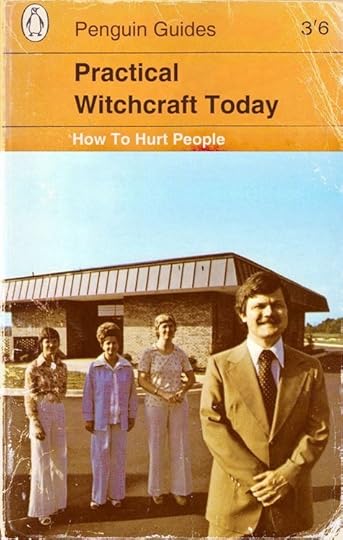
Be careful people! Your life isn’t a toy!
Published on August 09, 2013 16:33
August 8, 2013
"Children need art to better express the things caught within them. No
Children need art to better..."
“Children need art to better express the things caught within them. No
Children need art to better understand
That there are things that require expression. No
Children need art to better think their way toward understanding
Their faults, not those of their broken supplies
Nor the embodiment of the bisexual vegetable. No
Children need art to frame the battling crests of contemporary motion. No
Children need art to commandeer a sense of history
For their own senses. No
Children need art to outpace the bullish avalanche of history. No
Children need art to abandon the idea that history is an expression of things —
the saucers look nice, as do the wigs and Portuguese guns, but history as shown
in this castle is nothing if not infinitely replaceable. Art, however, is eternally
salient, gives not color to history but history to itself, and is what we have to
represent both the radiation and shadow of history”
- excerpted from “Poems,” by Brandon Shimoda and found in his book Portuguese. What I love here is the resounding “No” that comes at the end of so many lines. For my reading, it can act syntactically as “No, children need art…” or “No. Children need art…” or even the contrary “No children need art…” All these readings can fit. In fact, their senses braid into one another. Shimoda is arguing about this privileged perspective art has for children, and so saying that children need art to see that perspective in them while at the same time saying that no child needs art to know he or she has a unique perspective seems very apt to this mysterious quality we attribute to children. Their “innocence.” The poem is actually more a statement about race, and how we could possibly learn from children how to understand race. But this portion I especially love for its statement about the power of art.
Children need art to better understand
That there are things that require expression. No
Children need art to better think their way toward understanding
Their faults, not those of their broken supplies
Nor the embodiment of the bisexual vegetable. No
Children need art to frame the battling crests of contemporary motion. No
Children need art to commandeer a sense of history
For their own senses. No
Children need art to outpace the bullish avalanche of history. No
Children need art to abandon the idea that history is an expression of things —
the saucers look nice, as do the wigs and Portuguese guns, but history as shown
in this castle is nothing if not infinitely replaceable. Art, however, is eternally
salient, gives not color to history but history to itself, and is what we have to
represent both the radiation and shadow of history”
- excerpted from “Poems,” by Brandon Shimoda and found in his book Portuguese. What I love here is the resounding “No” that comes at the end of so many lines. For my reading, it can act syntactically as “No, children need art…” or “No. Children need art…” or even the contrary “No children need art…” All these readings can fit. In fact, their senses braid into one another. Shimoda is arguing about this privileged perspective art has for children, and so saying that children need art to see that perspective in them while at the same time saying that no child needs art to know he or she has a unique perspective seems very apt to this mysterious quality we attribute to children. Their “innocence.” The poem is actually more a statement about race, and how we could possibly learn from children how to understand race. But this portion I especially love for its statement about the power of art.
Published on August 08, 2013 06:50
August 7, 2013
Like the sound you’d make with the letter P, like please...
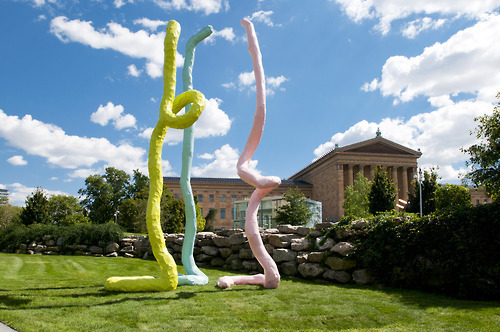
Like the sound you’d make with the letter P, like please or perfect or purple. “Lips,” 2012, by Franz West
Published on August 07, 2013 09:40
August 6, 2013
"Singing in Her Song She Died
The trope of a SWAN SONG, particularly of a mute swan turned songful,..."
“Singing in Her Song She Died
The trope of a SWAN SONG, particularly of a mute swan turned songful, keeps its webbing hidden to protect the moving effect of its glide. Though a mute swan is less vocal than other swans, it will hiss, grunt, snort, and whistle. In the rigging of phonetics a GLIDE was a sound produced as the vocal organs moved toward or away from the articulation of a vowel or consonant, for example, the “y” sound detected in the seemingly single-syllable passage through the word, MUTE. In MUTE, the “y” sounded out in the approach to “u” disclosed another syllable in the word, like something salted away that could now be savored, the silence surrounding the word was holding back another fraction. GLIDING spoke of unpowered flight, of noiseless, smooth, continuous motion.”
- from Loom, by Sarah Gridley. This is one of the more argumentative prose poems in Gridley’s book, yet it operates on the same associative construct that the other poems use. In a way, Gridley teaches you, her reader, how to think about the poetic associations she uses in other poems. How should you be reading Gridley? I suppose this could be called an Ars Poetica type of poem, but without the (what can sometimes be) awkward gesturing to itself.
The trope of a SWAN SONG, particularly of a mute swan turned songful, keeps its webbing hidden to protect the moving effect of its glide. Though a mute swan is less vocal than other swans, it will hiss, grunt, snort, and whistle. In the rigging of phonetics a GLIDE was a sound produced as the vocal organs moved toward or away from the articulation of a vowel or consonant, for example, the “y” sound detected in the seemingly single-syllable passage through the word, MUTE. In MUTE, the “y” sounded out in the approach to “u” disclosed another syllable in the word, like something salted away that could now be savored, the silence surrounding the word was holding back another fraction. GLIDING spoke of unpowered flight, of noiseless, smooth, continuous motion.”
- from Loom, by Sarah Gridley. This is one of the more argumentative prose poems in Gridley’s book, yet it operates on the same associative construct that the other poems use. In a way, Gridley teaches you, her reader, how to think about the poetic associations she uses in other poems. How should you be reading Gridley? I suppose this could be called an Ars Poetica type of poem, but without the (what can sometimes be) awkward gesturing to itself.
Published on August 06, 2013 09:27
A little more on the sexy side for Hanson. Though in real life...
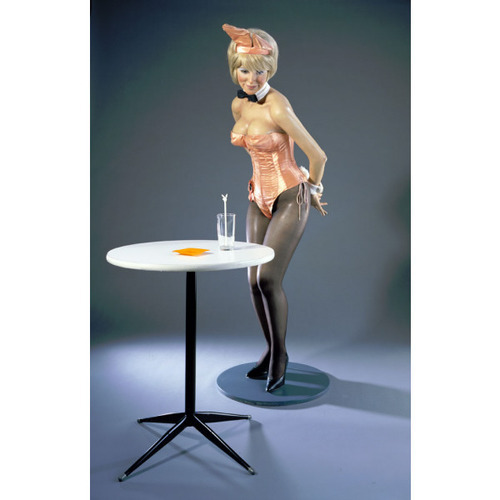
A little more on the sexy side for Hanson. Though in real life that satin bustier is a little worse for wear.
Published on August 06, 2013 05:40
"Sight works from far off and treats people just as it treats things; it also sets up an asymmetry..."
“Sight works from far off and treats people just as it treats things; it also sets up an asymmetry between looker and looked at. (You cannot see yourself as others see you, unless you arrange to look in the same mirror.) Touch, however, distinguishes people from things—a Duane Hanson sculpture looks like a human being, but won’t ever feel like a person. And touch is uniquely reciprocal: I can spy on or overhear you, but if you touch me, I’m touching you, and in all likelihood we both know it.”
- from “Thom Gunn: Kinesthetic Aesthetics," by Stephen Burt. Burt is at his best in Close Calls with Nonsense when he argues in favor of a certain kind of reading. Here, his thought about how difficult it is for a person to share how someone else sees them, but a person can share in the sensation of touch when someone touches them, opens Gunn’s poetry for me in a way I hadn’t really thought. Specifically, the constant action in Gunn’s poetry is the equivalent to touch. Or, in other words, Gunn doesn’t show me the subject of his poem, he puts me inside the subject’s actions. It explains to me why I’ve always felt such intimacy in Gunn’s poetry.
- from “Thom Gunn: Kinesthetic Aesthetics," by Stephen Burt. Burt is at his best in Close Calls with Nonsense when he argues in favor of a certain kind of reading. Here, his thought about how difficult it is for a person to share how someone else sees them, but a person can share in the sensation of touch when someone touches them, opens Gunn’s poetry for me in a way I hadn’t really thought. Specifically, the constant action in Gunn’s poetry is the equivalent to touch. Or, in other words, Gunn doesn’t show me the subject of his poem, he puts me inside the subject’s actions. It explains to me why I’ve always felt such intimacy in Gunn’s poetry.
Published on August 06, 2013 05:36



